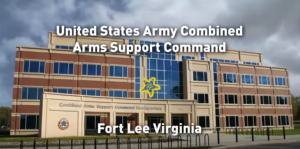Sustainment Week at CASCOM to discuss the future of Army Logistics
As the joint force demands a more expeditionary, regionally aligned and globally responsive force, sustainment forces must adapt to sustain global joint combined arms operations in sufficient scale, for ample duration, with joint, interorganizational and multinational partners, to achieve joint force commander objectives.
This shift in focus demands adaptation of sustainment mission command. The contested environment, with limited windows in which to deliver precision logistics, is the cornerstone for the operational challenges to overcome within the multi-domain battle fight.
Army senior leaders met for the U.S. Combined Arms Support Command (CASCOM) Sustainment Week at Fort Lee, Virginia, to discuss the future of Army logistics with the recognition that the operational environment has changed. The meeting was an opportunity for more than 120 leaders from the sustainment community to gather together to share ideas; find solutions; build on innovation; and present collaborative work based on the current and future contemporary operating environment.
“I encourage the sustainment leaders, at all levels, to become multi-functional logisticians who understand their place in the fight,” said. Gen. Gustave F. Perna, commanding general, U.S. Army Materiel Command.
Ordnance, Quartermaster and Transportation, Adjutant General and Financial Management leaders were briefed on the proposed force structure changes and emerging doctrine.
“This is an opportunity to look at ourselves (sustainment enterprise) and challenge ourselves to think critically about our ability to plan, synchronize, integrate and echelon transportation and commodities to support large-scale combat operations,” said Maj. Gen. Paul C. Hurley Jr., commanding general, CASCOM and host for the sustainment forum. “My staff has been working hard to determine what the sustainment force structure should look like and how to change the doctrine to meet future operations. This is your time to ‘murder board’ us and show us where the gaps are.”
The changes came about as the Army rewrote Field Manual 3-0 Operations (published October 2017) after recognizing a lack of doctrine across the Army when conducting operations short of armed conflict through large-scale ground combat.
Discussions focused on the new operating environment and the movement from brigade combat team-centric formations to division/corps as headquarters that can operate in an expeditionary manner, under austere conditions against a peer threat in a non-permissive environment.
“We are transitioning from COIN (counterinsurgency) operations to large-scale combat operations in a multi-domain battlespace,” Hurley said. “We (sustainment) must move from enterprise FOB (forward operating base) operations to being more flexible, mobile forces.
“The enterprise approach (using force structure gaps with contract solutions) worked well with a modular Army focused on a COIN fight,” said Hurley. “The enterprise approach cannot fully support large-scale combat operations.”
According to an upcoming CASCOM white paper on sustaining large-scale combat operations, the future Army requires sustainment forces fully capable of deploying, supplying, and maintaining the force while moving large quantities of commodities throughout the battlespace. That battlespace is larger and more complex than at any other time in our nation’s history.
“Now the threat is near-peer adversary – forces that have the same, if not better, capabilities,” said Col. Sydney Smith, director, Capabilities Development and Integration Division, CASCOM. “We are also looking at an Echelons Above Brigade Concept (EABC) that takes assets up to the division and corps level, so they have their own formations and capabilities not only at the brigade level which is our current doctrine,” Smith said. “We have to have the distribution lines and make the assumption we won’t have the time or ground space we have had in previous operations.”
“We must synchronize sustainment doctrine with maneuver doctrine,” said Hurley. “We have to also look at all the components. We cannot sustain large-scale combat operations with just the active duty sustainment forces.
CASCOM provides Training and Leader Development, and develops concepts, doctrine, organizations, lifelong learning, and materiel solutions, to provide Sustainment in support of a campaign quality Army with joint and expeditionary capabilities.
Source: UNITED STATES – CASCOM Public Affairs by Dani Johnson

